Holocaust remembrance
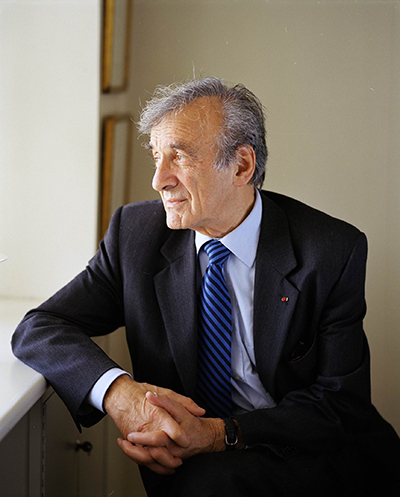
“To forget a Holocaust is to kill twice” – Elie Wiesel, Holocaust survivor and human rights campaigner
The Holocaust is the name given to the systematic murder of six million Jews by the Nazi regime and their allies during the Second World War. As well as Jews, other groups were persecuted for their perceived racial and biological inferiority. These included Roma, disabled people, Soviet prisoners of war and homosexuals. Others, such as Jehovah’s Witnesses, Socialists and Communists, were targeted for their religious or political beliefs. “Holocaust” is a Greek word meaning “sacrifice by fire”. Jewish people also refer to it as the “Shoah”. For the Nazis, the objective of the so-called “Final Solution” was the killing of all Jews in Europe. While most of the victims died in concentration camps such as Auschwitz-Birkenau, many perished at the hands of mobile death squads and others in ghettos like the one in Warsaw.
Photo Credit : Elie Wiesel Foundation for Humanity
 Holocaust timeline
Holocaust timeline
Hitler’s appointment as German chancellor in 1933 marked the start of the persecution of the Jews. The first concentration camp was built in Dachau near Munich, two months after his election. At first Jewish people suffered harassment and humiliation, but in 1938 the so-called Kristallnacht, or Night of Broken Glass, marked a big escalation in violence, with thousands of shops, synagogues and homes burned, nearly 100 Jews murdered and thousands more imprisoned. The “Final Solution” was devised in 1942 and soon afterwards mass killing began in the gas chambers of camps like Treblinka and Belzec. The slaughter was only stopped by the allied invasion of Germany and Nazi-occupied Poland in 1945.
30 January 1933
Hitler appointed Chancellor

Photo credit: Bundesarchiv, Bild 183-H1216-0500-002 / CC-BY-SA, CC BY-SA 3.0 DE h, via Wikimedia Commons
23 March 1933
First concentration camp set up in Dachau

Photo credit: Accessed at United States Holocaust Memorial Museum, courtesy of National Archives & Records Administration
7 April 1933
Laws barring Jews from holding civil service, university, and state positions
The Law for the Restoration of the Professional Civil Service was one of the first anti-Semitic and racist laws passed in the Third Reich. After another parliamentary election in March 1933, in which Hitler again failed to win a majority, the Nazi Party created a coalition government with the German National People's Party. Consequently, Hitler passed an act that effectively gave him dictatorial powers, allowing him to target the country’s Jewish population.
15 September 1935
The Nuremberg Laws are passed, denying Jews German citizenship
New anti-Semitic and racist laws were passed, including the Law for the Protection of German Blood and German Honour, which forbade marriages and extramarital intercourse between Jews and Germans. The Reich Citizenship Law declared that only those of German or related blood were eligible to be Reich citizens. The rest of the population remained without any citizenship rights.
13 March 1938
Anschluss - the German Army marches into Austria

Photo credit: Heinrich Hoffmann, Public domain, via Wikimedia Commons
5 October 1938
German Jews had their passports marked with a red ‘J’

Photo credit: United States Holocaust Memorial Museum, courtesy of National Archives and Records Administration, College Park
9 November 1938
Kristallnacht, the Night of Broken Glass.
Photo credit: United States Holocaust Memorial Museum, courtesy of National Archives and Records Administration, College Park
30 January 1939
Reichstag speech
The Reichstag speech is mainly remembered for Hitler’s declaration that if there was another world war, the Jews of Europe would be annihilated. Nazi propaganda minister Joseph Goebbels helped write the speech, which was delivered on the sixth anniversary of Hitler’s seizure of power in 1933. It lasted for two-and-a-half hours and dealt with both foreign and domestic policy.
1 September
Germany invades Poland: World War II begins.

Photo credit: United States Holocaust Memorial Museum, courtesy of National Archives and Records Administration, College Park
27 September 1939
Germany sets up ghettos in occupied Poland
Photo credit: United States Holocaust Memorial Museum, courtesy of National Archives and Records Administration, College Park
23 November 1939
Polish Jews ordered to wear yellow stars
Photo credit: United States Holocaust Memorial Museum, courtesy of National Archives and Records Administration, College Park
27 April 1940
Orders issued to set up a concentration camp at Auschwitz
Photo credit: United States Holocaust Memorial Museum, courtesy of National Archives and Records Administration, College Park
1940/41
The Selection Process: “The Nazis arrived and started a selection.” - Jack Kagan
"Early morning, lorries arrived, the doors have opened, the Nazi arrived and started a selection. You came out, he asked you, the head of the family, your profession, how many children. To the left, it's to go out to the yard; to the right it's to stand in the corner of the entrance of the building. Came to our turn, my uncle went in front, he said, 'What is your profession?' He said a saddle maker. 'How many children?' Two children. To the left. Came to my father. 'Your profession?' Again, saddle maker, two children. To the right. That means it was no rhyme or reason whom to select to death and whom to life. Because he went in front, two children, saddle maker, the same profession. We were the lucky ones, he left us to remain alive, and them to death. So my uncle Moishke, Soshke, Berol, and Leizer went out to the yard. They sent out four and a half thousand, four thousand people on lorries, took them outside the town into graves, into prepared graves, and massacred them, they shot them. That was Einsatzkommando, that was Einsatzkommando. My mother was standing practically opposite the window, and suddenly out of nowhere police, SS, came, with the back of their rifles hitting everybody, and I knew that this is the end of the people which are standing on the yard. In this execution I lost my mother, I lost my sister Nachama, I lost my auntie, Surcharsky."
Jack Kagan
Born 1929, Novogrodek (Vilna), Lithuania. Novogrodek ghetto. Liberated by Russians, Displaced Persons camp, Poland 1945. Married, three children.
Audio credit:Interview with Jack Kagan, Testimony: Video Interviews With Holocaust Survivors, reference C533/009, © British Library
22 June 1941
German Army invades the Soviet Union.
The German invasion of the Soviet Union brought the mass murder of Soviet Jews by Einsatzgruppen – mobile killing squads – including the 28 September 1941 murder of 33,000 Jews and an unknown number of gypsies at Babi Yar. It is estimated that the Einsatzgruppen and related personnel killed more than two million people between 1941 and 1945.
20 January 1942
Wannsee Conference
At the Wannsee Conference in Berlin, leading Nazis developed the plan to murder all the Jews of Europe, the so-called ‘Final Solution.’ Heydrich explained how European Jews would be rounded up and sent to extermination camps in the occupied parts of Poland, where they would be killed.
March 1942
Gas chambers began to operate at Sobibor death camp

Photo credit: United States Holocaust Memorial Museum, courtesy of National Archives and Records Administration, College Park
9 April 1943
The Warsaw ghetto uprising
Photo credit: United States Holocaust Memorial Museum, courtesy of National Archives and Records Administration, College Park
1944
The Camps: [Danish police] "They were unwilling to deport the Jews" - Eugene Heimler
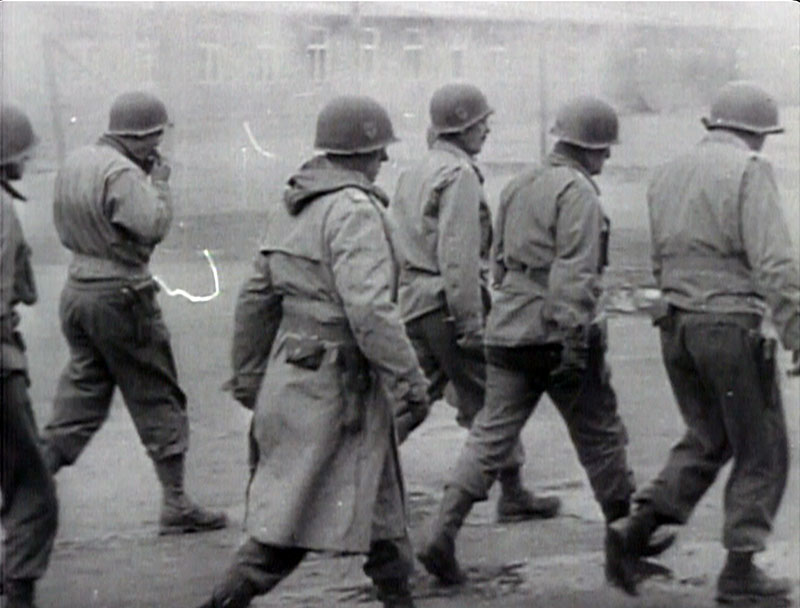
Eugene Heimler
Born 1922, Szombathely, Hungary.
Ghetto. Auschwitz, Buchenwald, Troglitz camps, then back to Buchenwald. Berger-Elster, death march to Czech border, escaped, taken to partisans. Arrived in England 1947. Three marriages, two children, one grandchild. Died December 1990.
Audio credit: Interview with Eugene Heimler by Jennifer Wingate, 1989, Living Memory of the Jewish Community, reference C410/056, © British Library
Photo credit: United States Holocaust Memorial Museum, courtesy of National Archives and Records Administration, College Park
1944
The Camps: “You could smell people being burnt" - Edith Birkin
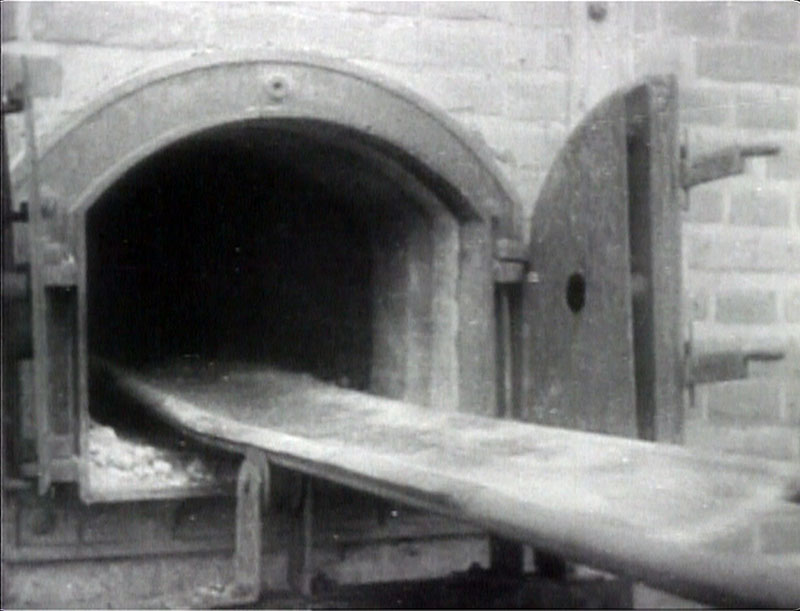
Edith Birkin
Born 1927, Prague, Czechoslovakia.
Lodz ghetto 1941. Auschwitz camp 1944. Sent to work camp and munitions factory. 1945 death march to Flossenburg camp, then to Belsen. Arrived in England 1946. Married, three adopted children.
Audio credit: Interview with Edith Birkin by Katherine Thompson, 1989, Living Memory of the Jewish Community, reference C410/030, © British Library
Photo credit: United States Holocaust Memorial Museum, courtesy of National Archives and Records Administration, College Park
17 January 1945
Death March from Auschwitz begins
In the face of Soviet troops advancing into the Germany-occupied territories, in January 1945 Himmler ordered all camps to be evacuated. Approximately 58,000 Auschwitz detainees were evacuated on foot under SS guard to concentration camps in Germany and Austria. Many of them were shot when unable to continue the so-called Death March.
January-April 1945
The liberation of camps
Photo credit: United States Holocaust Memorial Museum, courtesy of National Archives and Records Administration, College Park
1945
Liberation: "When we are liberated we are going to be dancing and kissing" - Edith Birkin
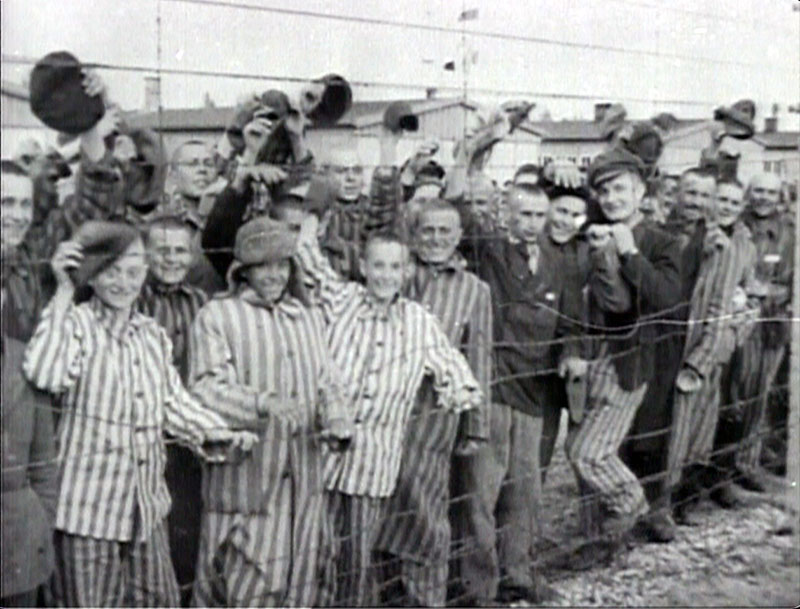
Edith Birkin
Born 1927, Prague, Czechoslovakia.
Lodz ghetto 1941. Auschwitz camp 1944. Sent to work camp and munitions factory. 1945 death march to Flossenburg camp, then to Belsen. Arrived in England 1946. Married, three adopted children.
Audio credit: Interview with Edith Birkin by Katherine Thompson, 1989, Living Memory of the Jewish Community, reference C410/030, © British Library
30 April 1945
Hitler commits suicide
The inevitable military defeat and news that the Italian resistance movement had executed Mussolini increased Hitler’s determination to avoid capture. He shot himself in the head in his Berlin bunker rather than be taken prisoner by the encircling Soviet troops. On 8 May 1945, Germany surrendered.
22 November 1945
Nuremberg Trials of Nazi war criminals began
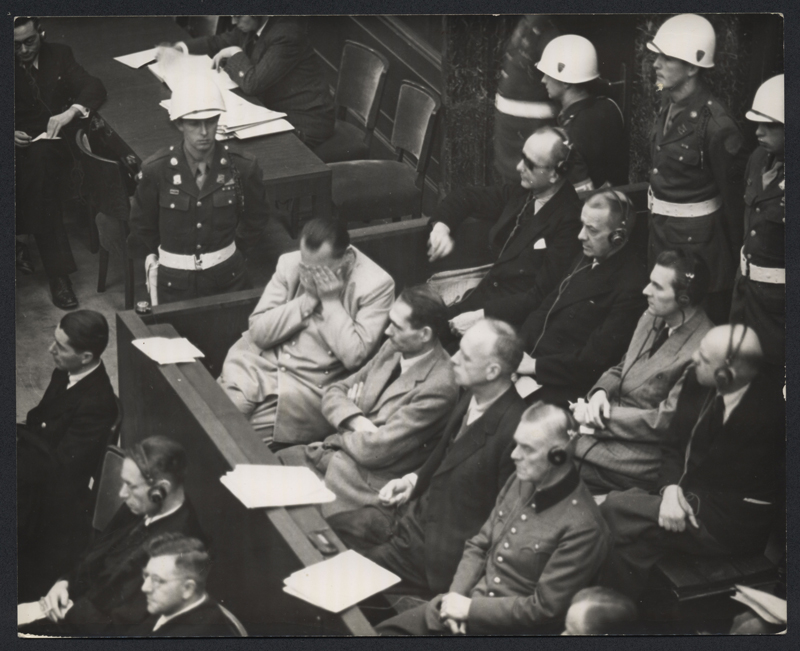
In November 1945 twenty two Nazi political and military leaders were tried for war crimes and crimes against humanity, including the Holocaust. The trial was held before an International Military Tribunal at the Palace of Justice in Nuremberg, Germany. The city was chosen for symbolic reasons, as it was considered to be the ceremonial birthplace of the Nazi party and the scene of many of its annual mass rallies. It lasted until 1 October 1946. Judges from Great Britain, France, the USSR, and the US presided over the hearing. At its conclusion they sentenced 12 of the accused to death and 3 to life imprisonment. Four others received jail terms of between 10 and 20 years, while the remaining 3 defendants were acquitted.
Photo credit: United States Holocaust Memorial Museum Collection, Gift of Elizabeth Duddy1
 Our Work
Our Work
The Holocaust was one of the reasons why the Council of Europe was set up in 1949, just four years after the liberation of Auschwitz-Birkenau. The aim was to prevent such a genocide happening again in Europe, and to ensure that human life and human rights would be respected, no matter what the person’s nationality, ethnicity, race, religion or sexual orientation. Within its wider role of promoting and protecting human rights, democracy and the rule of law, the Council of Europe works to combat anti-Semitism, homophobia and anti-gypsyism, and to promote the rights of Roma, LGBTI people and the disabled.
Holocaust Remembrance Day
The Auschwitz-Birkenau concentration camps were liberated on 27 January 1945. Only some 7,000 prisoners were still alive, after more than a million people perished there. The Council of Europe was the moving spirit behind the introduction of a Day of Holocaust Remembrance and Prevention of Crimes against Humanity. Education ministers from member states took the decision in October 2002. While Germany and France chose 27 January, the day when Auschwitz was liberated, Holocaust Day is marked on alternative dates by other countries, according to their respective historical experience.
Teaching Remembrance
The Council of Europe also helps teachers with their Holocaust Remembrance Day preparations, by making available teaching material for raising pupil awareness of those dark times and exploring the topics of genocide and crimes against humanity, so as to promote prevention, understanding, tolerance, and friendship between nations, races and religions. The aim is to develop and firmly establish the teaching of this subject in Europe.
 Holocaust survivors’ stories
Holocaust survivors’ stories
Ida Grinspan
On a quiet winter night in 1944, in support of the Third Reich’s programme for exterminating all European Jews, French authorities arrested Ida Grinspan, a young Jewish girl hiding in a neighbour’s home in rural Nazi-occupied France. Of the many lessons she would learn after her arrest and the subsequent eighteen months in Auschwitz, the Holocaust’s most death camp, the first was that “barbarity enters on tiptoes . . . [even] in a hamlet where everything seemed to promise the peaceful slumber of places forgotten by history”. After the war, she teamed up with a French journalist to write a best-selling account of her ordeal and miraculous survival in one of the darkest periods of modern European history.
Marin Constantin
Marin Constantin, a survivor of the Holocaust, recounts his experiences between 1942 and 1944, when he was forcibly deported to Nazi-occupied Ukraine. He witnessed at first-hand the mass brutality and inhumane treatment of individuals, particularly the Roma people, while he was forced to work the land in exchange for meagre rations. He underlines that human rights abuses are real and relevant, even in the twenty-first century. His ordeal haunted him long after he escaped and returned home.
Nat Shaffir
Nathan Spitzer (now Nat Shaffir) was born on December 26, 1936, in Iasi, Romania. His family owned a large farm that supplied dairy products to the Romanian army. One day in November 1942 the Fascist Iron Guard visited the farm, accompanied by a priest who identified the family as Jews. The Spitzers’ farm and all their cattle were confiscated and the family was given four hours to pack their belongings. Allowed to take only one horse and a wagon, they moved into Iasi’s Socola neighbourhood. Nat and his sisters were barred from attending school and their father was sent into forced labour for the Romanian regime. Although Nat’s immediate family survived the Holocaust, most of their extended family, who lived in Hungarian-occupied Transylvania, died in the Auschwitz-Birkenau and Buchenwald concentration camps. In 1950 Nat’s family emigrated to Israel, from where Nat eventually moved to the USA where he started a business and raised a family. He is now a volunteer with the United States Holocaust Memorial Museum in Washington DC.
Jack Kagan - The Selection Process: “The Nazis arrived and started a selection.”
Eugene Heimler - The Camps: [Danish police] "They were unwilling to deport the Jews"
Edith Birkin - The Camps: “You could smell people being burnt"
Edith Birkin - Liberation: "When we are liberated we are going to be dancing and kissing"
 Denying the Holocaust
Denying the Holocaust
- Holocaust denial is now a criminal offence in many countries. Ursula Haverbeck, dubbed “the Nazi grandma” by the German media, repeatedly claimed that Auschwitz was "not historically proven" to be a death camp, claiming it was a labour camp instead. An estimated 1.1 million people were murdered at the camp. 90 per cent of the victims were Jewish. She was sentenced to two years in prison in 2018.
- British historian David Irving was sentenced to three years in prison for denying the Holocaust in two speeches he gave in Austria in 1989. They included a call to end “the gas chambers fairy tale” and claims that Hitler had helped Europe’s Jews, and that the Holocaust was a myth. He pleaded guilty and told the court he now accepted that the Nazis had killed millions of Jews.
 Taking responsibility for the Holocaust: the Nuremberg Trials
Taking responsibility for the Holocaust: the Nuremberg Trials
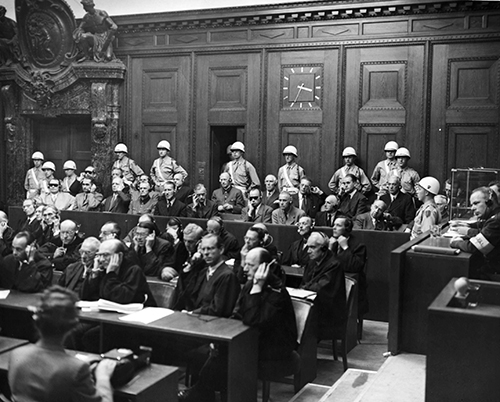
On 20 November 1945, twenty two Nazi political and military leaders were indicted for conspiracy, crimes against peace, war crimes and crimes against humanity. The trial was held before an International Military Tribunal at the Palace of Justice in Nuremberg, Germany. The city was chosen for practical reasons. The Americans wanted a city in their zone of influence, with a suitable court building, an adjoining prison and an airport. Judges from Great Britain, France, the USSR, and the US presided over the hearing. The verdicts were delivered on 30 September and 1 October 1946. Twelve of the accused were sentenced to death and three to life imprisonment. Four others received jail terms of between 10 and 20 years, while the remaining three defendants were acquitted. At the start of the trial the American chief prosecutor, Robert H Jackson, underlined the importance of the rule of law in the proceedings: “That four great nations, flushed with victory and stung by injury, stay the hand of vengeance and voluntarily submit their captive enemies to the judgement of the law is one of the most significant tributes that power has ever paid to reason”.
Photo credit: United States Holocaust Memorial Museum Collection
Remembering the Nuremberg Trials
The son of a Nazi war criminal, a survivor of the Holocaust and the daughter of a defence lawyer, commissioned to argue on behalf of German soldiers accused of the carrying out Second World War atrocities. Watch their short stories, as they remember the Nuremberg Trials.
Courtesy, Deutsche Welle
 Resources
Resources
- Secretary-General’s Special Representative on Antisemitic, Anti-Muslim and other forms of religious intolerance and hate crimes
- Council of Europe website on Roma genocide
- Mauthausen Memorial (Austria)
- Kazerne Dossin – Memorial, Museum and Documentation Centre on Holocaust and Human Rights (Belgium)
- Jasenovac Memorial Site and Memorial Museum (Croatia)
- Mémorial de la Shoah (France)
- Memorium Nuremberg Trials (Germany)
- House of the Wannsee Conference (Germany)
- Buchenwald Memorial Site (Germany)
- Dachau Concentration Camp Memorial Site (Germany)
- KZ-Gedenkstätte Neuengamme (Germany)
- Holocaust Memorial Center (Hungary)
- Yad Vashem (Israel)
- Ghetto Fighters' House Museum (Israel)
- Beit Theresienstadt (Beit Theresienstadt Martyrs Remembrance Association) (Israel)
- Museo della Shoah (Italy)
- Riga Ghetto and Latvian Holocaust Museum
- Anne Frank House (Netherlands)
- Holocaust Centre of New Zealand (New Zealand)
- Auschwitz-Birkenau Memorial and Museum (Poland)
- Museum - Memorial Site in Belzec (Poland)
- The National Holocaust Centre and Museum (United Kingdom)
- The Holocaust Exhibition (Imperial War Museum, London)
- Elie Wiesel Foundation (United States of America)
- United States Holocaust Memorial Museum

